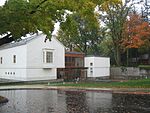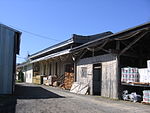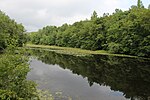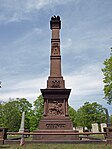Benedict House and Shop
1740 establishments in the Thirteen ColoniesHouses completed in 1740Houses in Ridgefield, ConnecticutHouses on the National Register of Historic Places in ConnecticutNational Register of Historic Places in Fairfield County, Connecticut
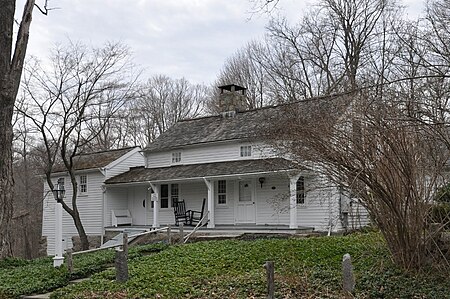
The Benedict House and Shop is a historic property at 57 Rockwell Road in Ridgefield, Connecticut. Built in 1740, the connected house and shop are among the oldest surviving buildings in the community. The shop is a particularly rare example of a cobbler's workshop of the 19th century. They are further notable for the sympathetic restoration they underwent at the hands of architect Cass Gilbert. The property was added to the National Register of Historic Places on December 4, 1998.
Excerpt from the Wikipedia article Benedict House and Shop (License: CC BY-SA 3.0, Authors, Images).Benedict House and Shop
Rockwell Road,
Geographical coordinates (GPS) Address Nearby Places Show on map
Geographical coordinates (GPS)
| Latitude | Longitude |
|---|---|
| N 41.271944444444 ° | E -73.492222222222 ° |
Address
Rockwell Road 57
06877
Connecticut, United States
Open on Google Maps

